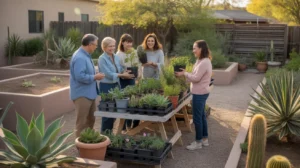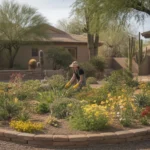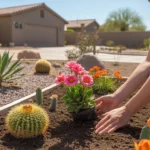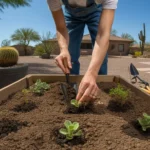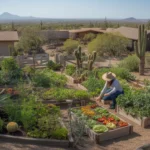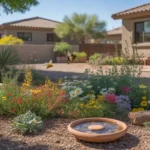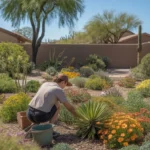As the winter chill fades and the sun’s warmth returns to the Southeast Valley, it’s time to awaken your garden from its seasonal slumber. Spring is the perfect time to give your yard a fresh start with a thorough cleanup. But why not add a fun twist this year by hosting a plant swap with neighbors and friends? It’s a great way to diversify your garden, connect with fellow plant lovers, and breathe new life into your outdoor space.
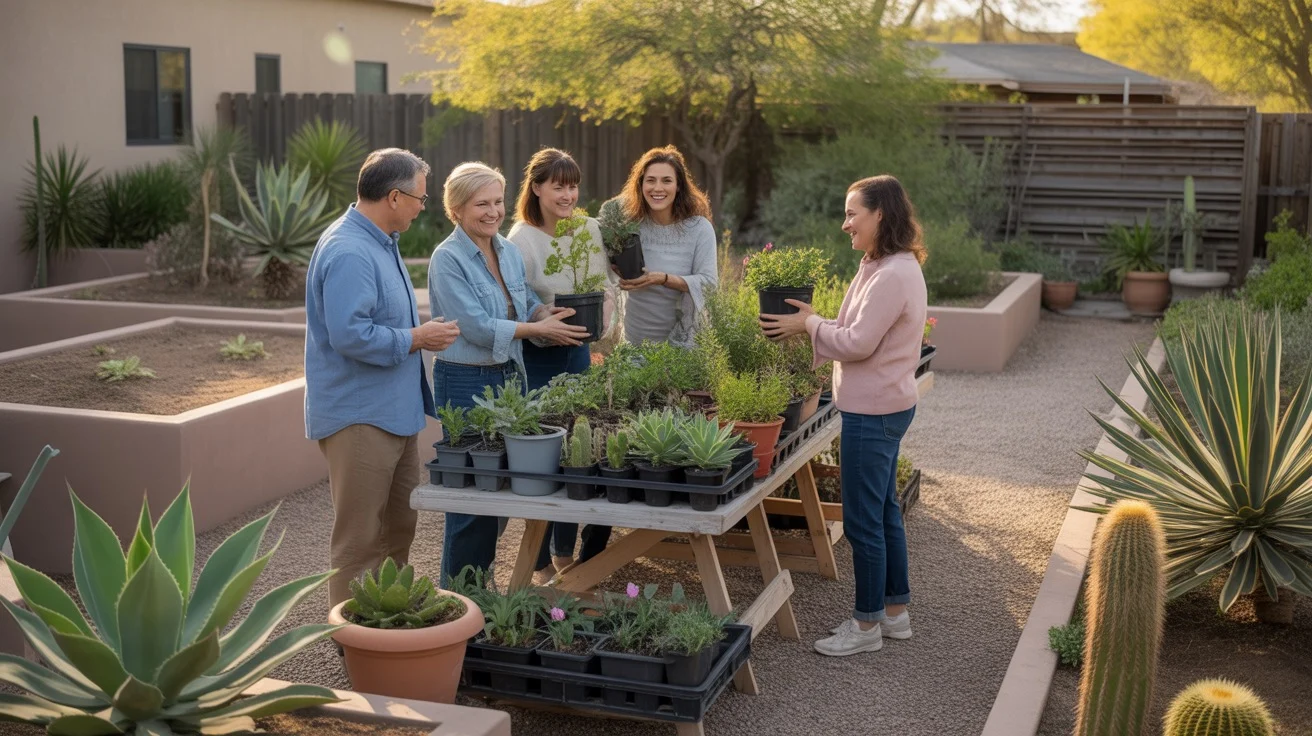
Assess Your Garden’s Post-Winter Needs
Before diving into your spring cleanup, take a stroll through your garden to assess what needs attention. Look for any damage caused by winter storms or freezing temperatures. Check for broken branches, damaged irrigation lines, or areas where mulch has washed away. Make a list of tasks to tackle, prioritizing those that will have the most impact on your garden’s health and appearance.
In the Southeast Valley, it’s important to inspect your desert-adapted plants for signs of stress. Remove any dead or damaged foliage from agaves, aloes, and cacti. Prune back frost-damaged bougainvillea and lantana, cutting them back to healthy wood. This will encourage fresh growth as the weather warms up.
Clear Out the Old to Make Room for the New
Spring cleanup is all about giving your garden a fresh canvas. Start by removing any dead annuals and perennials that didn’t survive the winter. Pull up weeds that may have sprouted during the cooler months, taking care to remove the entire root system to prevent regrowth. Rake up fallen leaves and debris, which can harbor pests and diseases if left unchecked.
As you clear out the old growth, consider which plants you’d like to replace or add to your garden. This is where the plant swap comes in! Make a list of plants you’re willing to share, such as divisions of overgrown perennials or self-seeded annuals. You can also start some extra seedlings to trade with your neighbors.
Organize a Neighborhood Plant Swap
A plant swap is a fun and eco-friendly way to introduce new varieties to your garden without spending a dime. Reach out to your neighbors and friends who share your passion for gardening. Choose a date and location for your swap, such as a local park or community center. Encourage participants to bring healthy, well-established plants to trade.
On the day of the swap, set up tables where everyone can display their offerings. Label each plant with its name, sun and water requirements, and any special care instructions. Take turns selecting plants, ensuring that everyone goes home with some new green friends. You can even make it a potluck event, sharing garden-fresh snacks and swapping tips and advice.
Refresh Your Garden’s Foundation
With your new plants in hand, it’s time to give your garden a solid foundation for the growing season ahead. Replenish your soil by adding a layer of compost or well-rotted manure. This will improve soil structure, fertility, and water retention. If you have raised beds, top them off with fresh soil mix.
Spread a fresh layer of mulch around your plants to help retain moisture, suppress weeds, and regulate soil temperature. In the Southeast Valley, opt for organic mulches like shredded bark or straw, which will break down over time and enrich the soil. Avoid using rock mulch around heat-sensitive plants, as it can amplify the sun’s intensity.
Plant Your New Additions with Care
With your garden beds refreshed and ready, it’s time to plant your new additions from the swap. Choose locations based on each plant’s sun and water needs, taking into account the unique challenges of desert gardening. Group plants with similar requirements together to create efficient watering zones.
As you plant, consider the mature size of each specimen to avoid overcrowding. Water your new plants deeply and regularly until they establish strong root systems. Apply a layer of mulch around the base of each plant to help retain moisture and protect the roots from the intense desert sun.
Enjoy Your Revitalized Garden
As spring unfolds, take time to enjoy the fruits of your labor. Watch as your garden comes to life with fresh growth and vibrant blooms. The plants you brought home from the swap will add new textures, colors, and fragrances to your outdoor space. And as you nurture these living treasures, remember the connections you’ve made with your fellow gardeners—a community united by a love of growing things.
With your spring cleanup complete and your plant swap treasures settled in, your Southeast Valley garden is ready to thrive. Embrace the season of renewal and growth, and savor the simple joys of tending to your own little piece of desert paradise.
For more inspiration and practical tips, check out The University of Arizona Cooperative Extension’s gardening publications. They offer a wealth of information tailored to the unique challenges and opportunities of desert gardening in the Southeast Valley and beyond.

